This week’s blog includes a version of the text published in the blog of the Museum of the Alhambra, which links Romanesque works in different museums, including ours, to an Almoravid thurible in the Alhambra’s collection.
Museum of the Alhambra
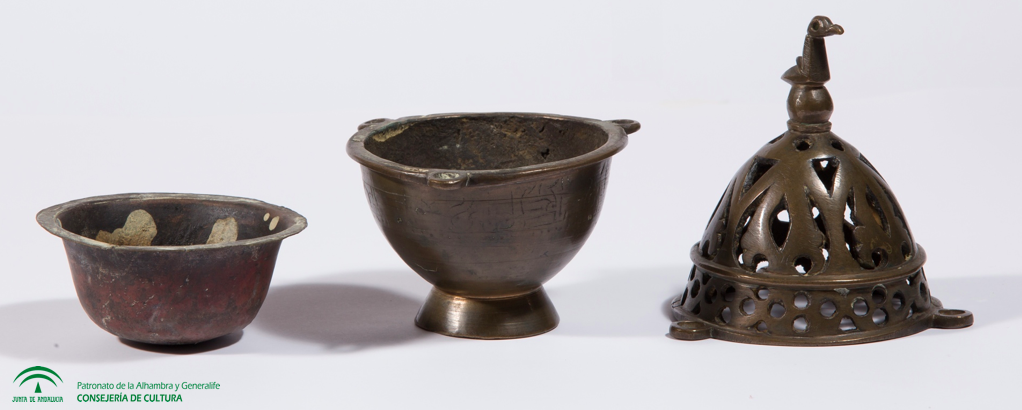
One of the most outstanding bronzes to be found exhibited in the Museum of the Alhambra is a thurible (incense burner) of the Almoravid period. It is an object made up of three parts: a base, an inner bowl to collect the ashes, and a lid.
On the bottom of this thurible there is an epigraphic band in Kufic script with the phrase “Full blessing, prosperity and glory. Full blessing and glory. Blessing,” and it is notable for the fretted decoration on its lid topped by the schematic figure of a bird. This piece was made to be hung from chains, now lost, and so both the bottom and the top parts have three protruding rings on the rim.
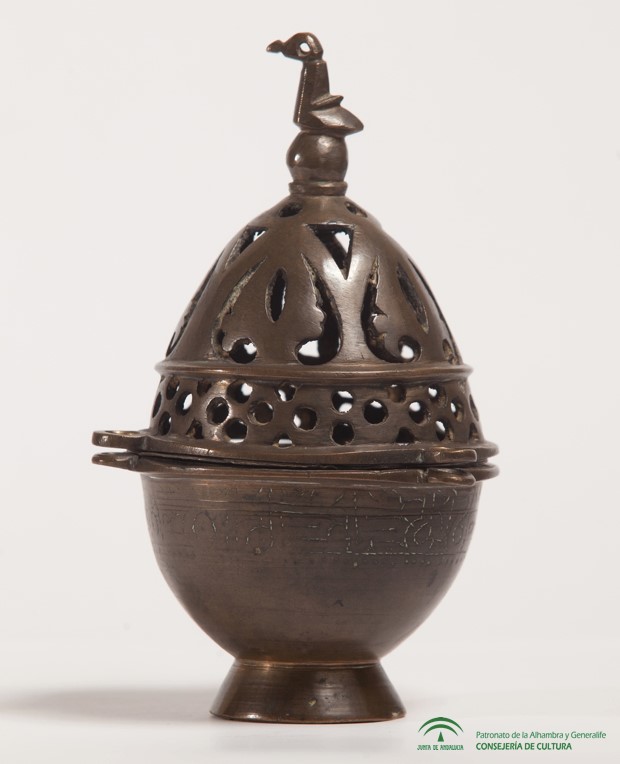
What is unusual about this thurible is the absence of similar known pieces in Hispano-Islamic art. There are various objects related to fire that share characteristics with this thurible, such as the figure of a bird, which belongs to Hispano-Islamic decorative repertories and which has featured as a projecting ornamental piece on several bronze oil lamps since the time of the Caliphs, for instance the ones kept in the Museo Arqueológico de Sevilla, the Instituto Valencia de Don Juan, the Museo de Algeciras [pdf] and the Fundación Rodriguez-Acosta.
Similar birds are also present on an Almohad brazier found in Plaza de Chirinos in Córdoba, now in that city’s Museum of Archaeology, and on a bronze censer from Granada conserved in the Instituto Valencia de Don Juan.
But beyond these decorative similarities we do not know of the existence of any other similar thuribles made by Almoravid artists. In fact, this piece does not even have a specific function, either religious or domestic, in the Islamic world. One must remember that thuribles were designed to hang from chains so that they could be swung in the air and thus spread the fragrance of the incense, a function that belongs to Christian but not Islamic liturgy.
To find parallels for this object one has to turn precisely to peninsular Romanesque art, as in both frescoes and sculptures contemporaneous to the creation of this thurible one finds similar pieces held by thurifer angels.
This is the case with The Annunciation and Thurifer Angel, a mural fresco from the chapel of Santa Cruz de Maderuelo (Segovia), now in the Prado Museum after being transferred to canvas in 1947. The function of thurifer angels is to burn incense, the reason why they hold thuribles like the ones that appear in this work. The thuribles of Maderuelo are painted with neither volume nor depth, but despite the simplicity of the lines one can appreciate the similarities with the thurible in the Museum of the Alhambra, also with oval-shaped pieces that sit on a truncated-conical base, and a lid on which fretted motifs can be intuited similar to those on the piece we are discussing.
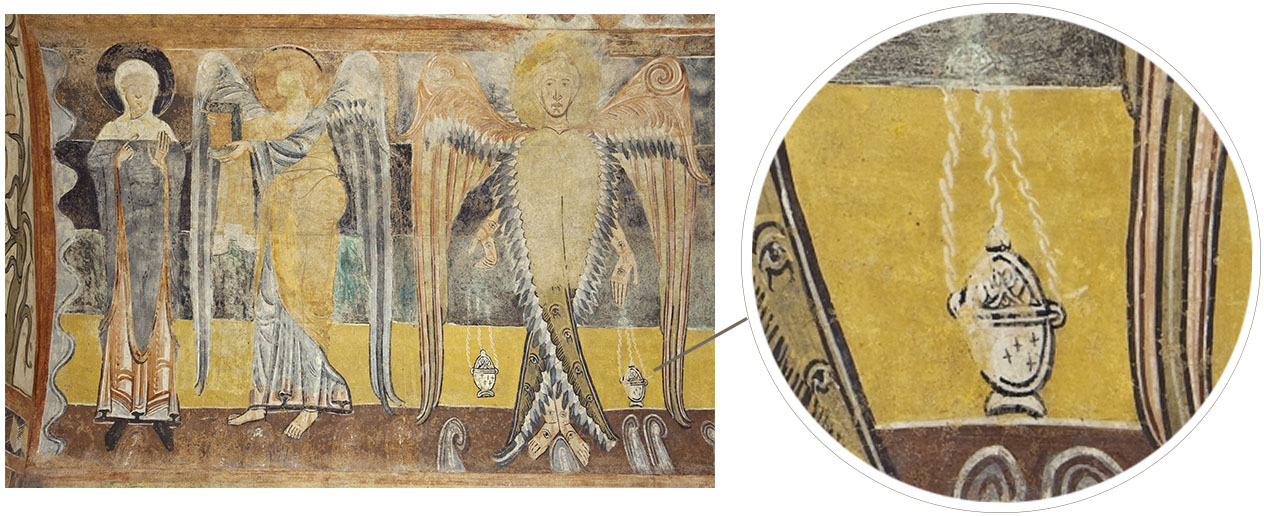
A fresco transferred to canvas is also the decoration of the apse of the parish church of Sant Pau in Esterri de Cardós, now in the Museu Nacional d’Art de Catalunya.

This Romanesque painting from the second half of the 12th century presents Christ in majesty with two thurifer angels holding a similar-shaped thurible in each hand.
Likewise, we find similar incense burners in the frescoes of the Romanesque chapel of San Miguel de Foces, and in the late 12th-century paintings from the Chapel of San Esteban de la Viguera in La Rioja.
In sculpture we find the same type of thuribles on the archivolt of the north front of the church of San Miguel in Estella, with great detail in the carving of the thurible, and on the archivolt of the south front of the church of San Juan de Mercado in Zamora.

Examples are also depicted on items of furniture, like the baptismal font from the church of Santa María del Azogue in Puebla de Sanabria (Zamora) or in the decoration of a tomb in the church of Santa María Magdalena in Zamora, with a design very similar to that in the Museum of the Alhambra. One can also see two hanging thuribles in a style similar to the Almoravid one on the 12th-century Martinet Frontal, an altar frontal from the chapel of Lles, in Lleida, now in the Worcester Art Museum (USA).
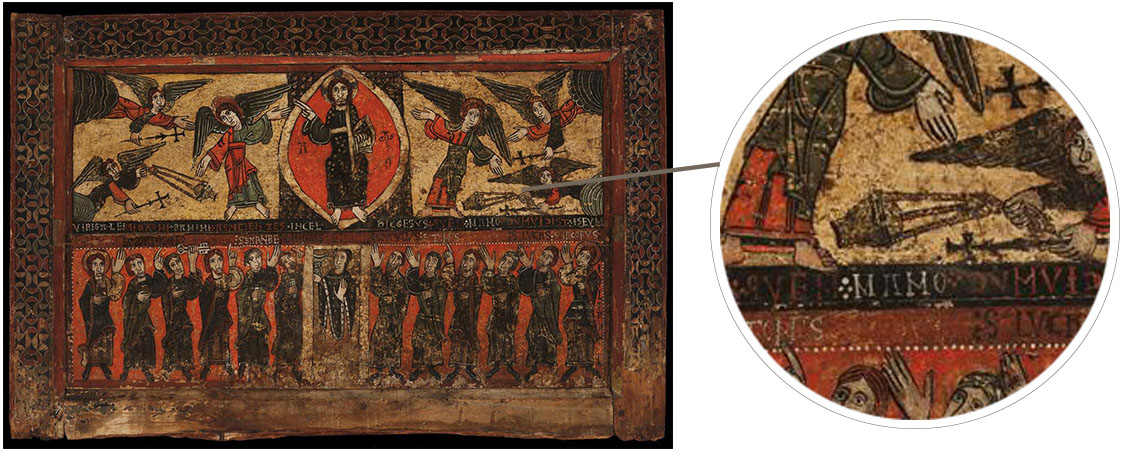
All these depictions show that this type of thurible was common in the religious iconography of the 12th century, the date of the Almoravid thurible in the Museum of the Alhambra. And they were also pieces used in Christian liturgy, as shown by the fact that there are other Romanesque thuribles, for instance one from the 12th century and another from the 13th in the Museu Nacional d’Art de Catalunya:
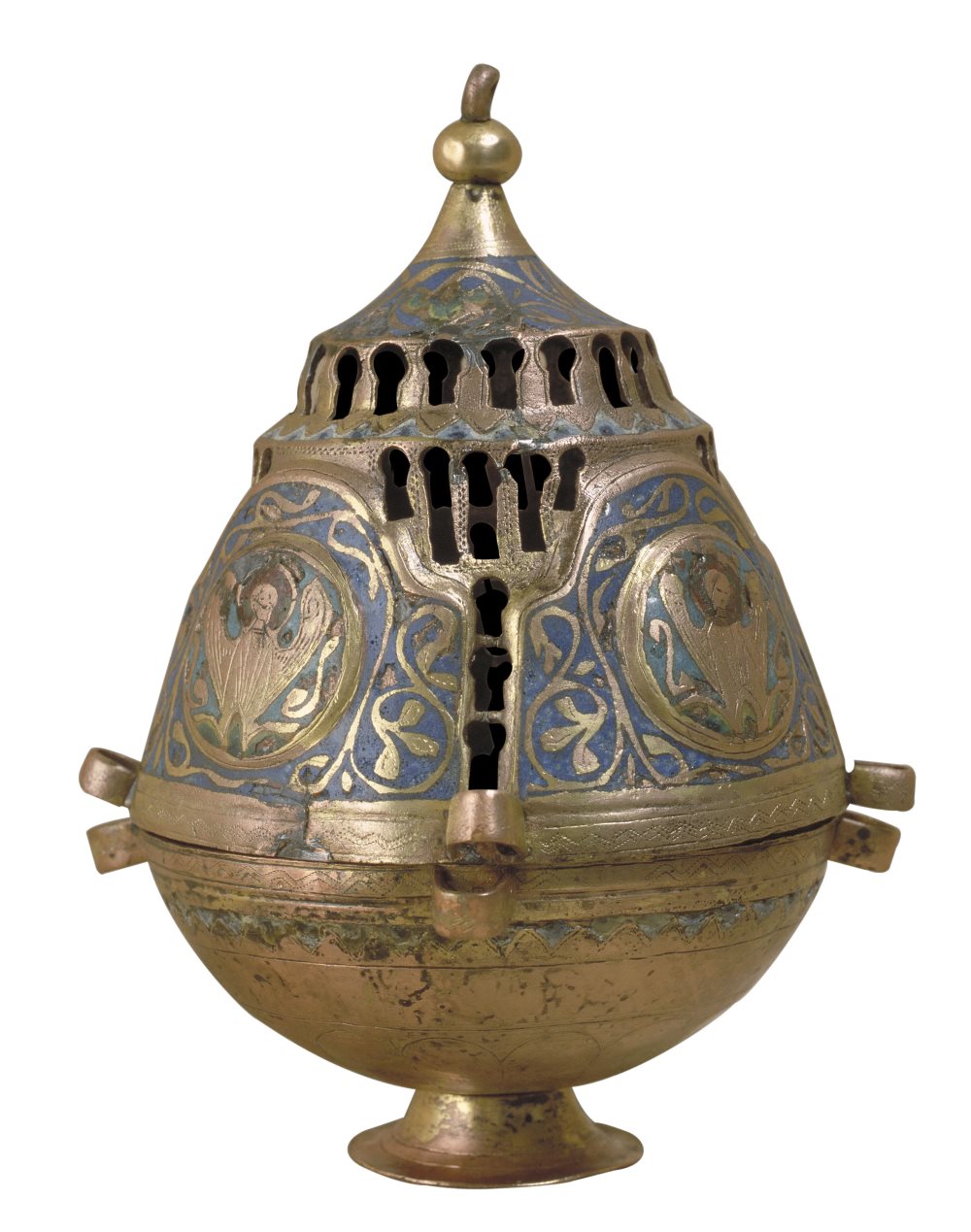
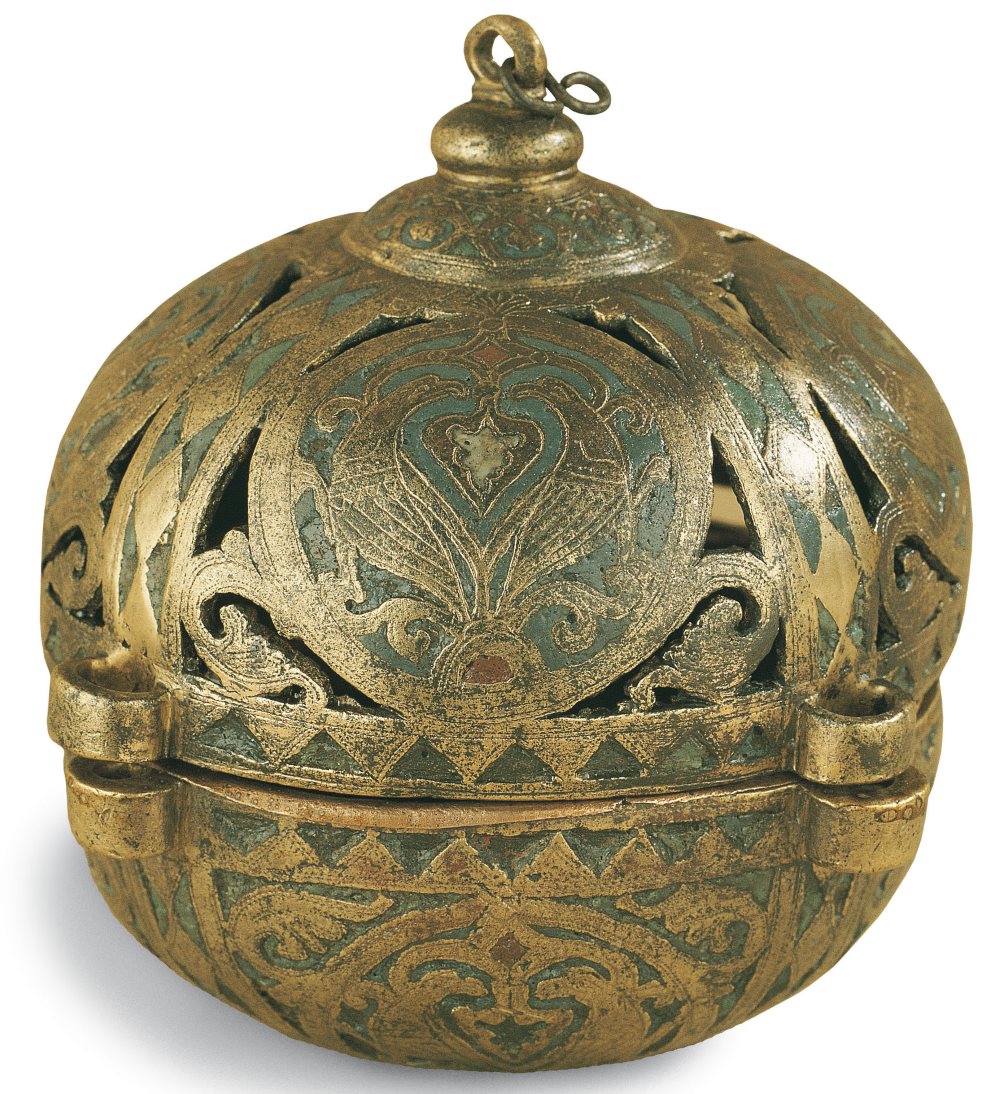
In light of this, we ought to wonder about the reason why a piece such as this was created by Almoravid artists, bearing in mind that a thurible of this kind has no specific known use in either the Hispano-Islamic domestic or liturgical sphere. The answer lies in trade with the Christian kingdoms and the good reputation of Hispano-Islamic metalworking arts, which made these objects highly prized all over the peninsula.
Recommended links:
Complete file of the thurible, CERES, Red Digital de Colecciones de Museos de España







